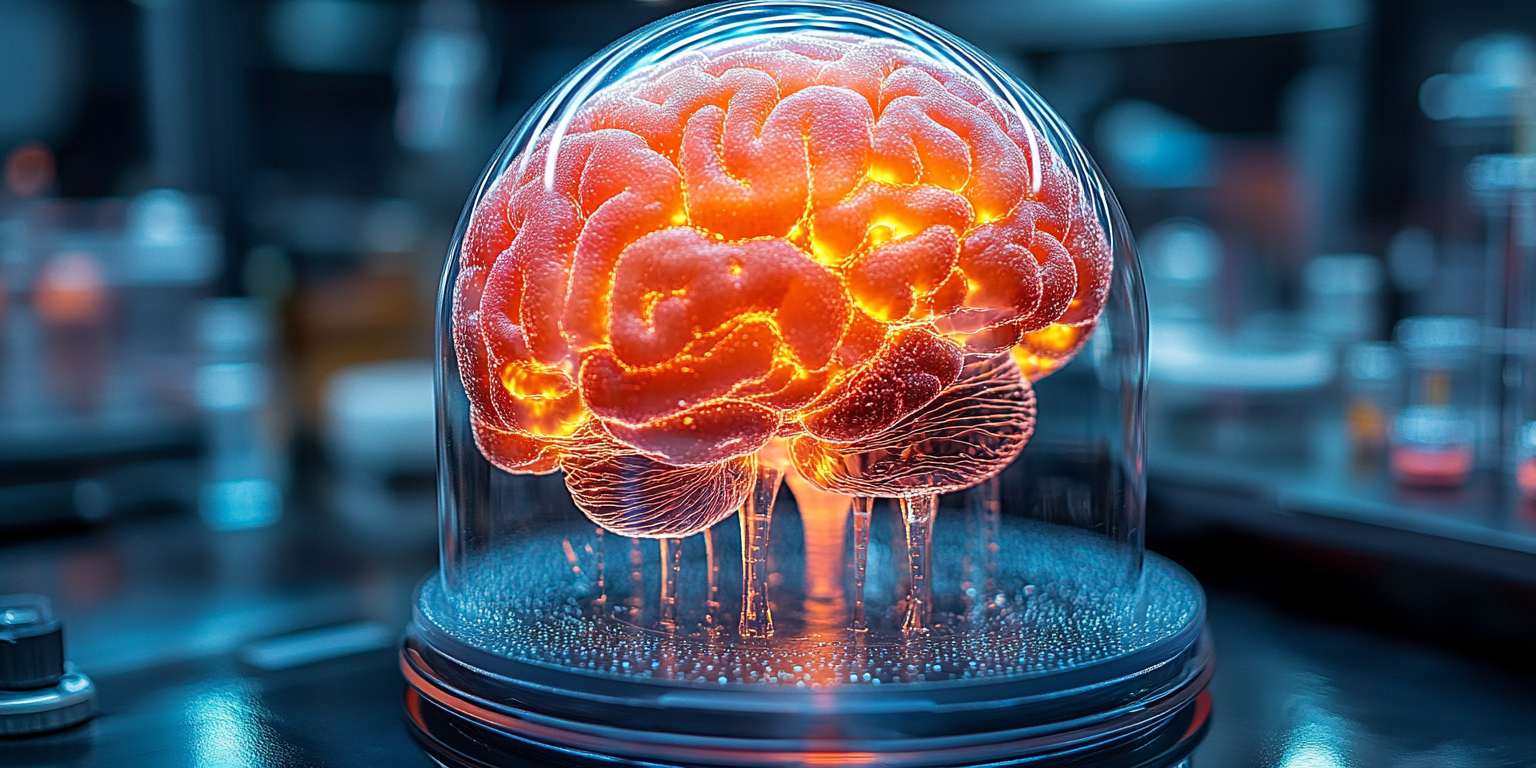Organoid Neuromodulation Therapeutics: A Frontier in Regenerative Neuromedicine
Introduction
Technological advancements in neuroscience are revolutionizing our understanding of the brain and its intricate workings. Organoid neuromodulation therapeutics is a novel field with the potential to not only treat but also enhance nervous system function. This article explores the latest advancements in organoid neuromodulation therapeutics, examining its potential applications, challenges, and ethical considerations.
Research and Development in Organoid Neuromodulation Therapeutics
The field of organoid neuromodulation therapeutics utilizes brain organoids, which are three-dimensional structures cultivated from human stem cells, to study and potentially treat neurological diseases. These organoids provide a more accurate model of the human brain than traditional cell cultures or animal models, as they closely resemble the cellular composition, structure, and function of the human brain (MDPI, 2025a). This is particularly important for studying neurological diseases, as many of these conditions have unique features that are not fully replicated in animal models. Organoid models offer a valuable tool for investigating human-specific aspects of brain development and disease, bridging the gap between traditional cell cultures and animal models (MDPI, 2025b).
Researchers are exploring various methods to modulate neural activity in these organoids, including electrical stimulation, magnetic stimulation, and optogenetics. One promising area of research involves using dynamic patterns of neural stimulation to "educate" brain organoids (MDPI, 2025c). This involves exposing organoids to information-rich signals, such as those found in natural environments, to guide the formation of appropriate neural connections and dynamic processes. This approach aims to develop sentience in organoids, defined as the capacity for feeling, which could have significant implications for regenerative neuromedicine.
Clinical Trials and Applications
Although organoid neuromodulation therapeutics is still in its early stages, ongoing clinical trials are exploring its potential for various neurological diseases. Signet Therapeutics, a clinical-stage biotech company, is leveraging organoids and AI to develop first-in-class cancer therapies (BioSpace, 2025). Their lead candidate, SIGX1094, is the first pipeline drug discovered using AI and organoid disease models to enter clinical trials for diffuse gastric cancer. It has also shown promise in treating other cancers, including ovarian, triple-negative breast, and pancreatic cancers.
Researchers at Stanford University are using brain organoids and assembloids (fused organoids representing different brain regions) to study and treat neurodevelopmental disorders like Timothy syndrome (Stanford Medicine, 2024). They have successfully used antisense oligonucleotides (ASOs) to correct the genetic defect responsible for Timothy syndrome in organoids and assembloids, suggesting a potential therapeutic approach for this disorder.
Organoids also hold promise for personalized medicine and precision medicine. Patient-derived organoids can be used to study disease in a personalized manner and to test the efficacy of different treatments for individual patients. This approach could lead to more effective and targeted therapies for a wide range of neurological conditions (MDPI, 2025b).
Companies Developing Organoid Neuromodulation Therapeutics
Several companies are actively involved in developing organoid neuromodulation therapeutics, categorized as follows:
Drug Discovery and Testing
- XtalPi: Integrating quantum physics, AI, and robotics for accelerated drug discovery.
- CELLphenomics: Leveraging organoids for drug discovery and testing.
- Curi Bio: Using human iPSC-derived cells for drug discovery.
- Okomera: Developing automated 3D organoid screening technology.
- Vyant Bio: Developing human-based microOrgan® plates for drug discovery.
Disease Modeling and Diagnostics
- AxoSim: Developing NerveSim® platform for predicting clinical efficacy and toxicity.
- Hesperos: Creating organoid-based disease modeling platforms.
- HUB Organoids: Developing patient-derived "mini-organs in a dish."
- Nilogen Oncosystems: Creating 3D cancer models using patented tumoroid technology.
Cancer Therapies
- Signet Therapeutics: Developing AI-driven cancer therapies using organoids.
- SEngine Precision Medicine: Identifying and validating novel cancer therapies.
Organoid Technologies and Platforms
- Biopico Systems: Leading the field of interacting multiple organoids.
- Cell Microsystems: Manufacturing tools for single-cell analysis in organoids.
- Cherry Biotech: Developing advanced platforms for drug efficacy prediction.
- Emulate Bio: Creating in vitro models for drug discovery.
- Encapsulate: Developing biochips for cancer cell cultivation.
- Genetika+: Creating personalized medicine applications for depression.
- Lide: Providing preclinical research services using organoids.
- Organoid Therapeutics: Developing organoid-based technologies for genetic corrections.
- Organovo: Utilizing 3D bioprinting for tissue engineering.
- PharmaCyte Biotech: Innovating cell culture technologies for organoid research.
- TheWell Bioscience: Developing 3D biomimicking platforms for precision medicine.
- Vivodyne: Cultivating human tissues in 3D microfluidics for complex function recreation.
Challenges and Limitations
Despite the significant progress, challenges remain:
- Lack of standardization: Variability in organoid generation protocols (PMC, 2025a).
- Limited maturation: Organoids often resemble developing rather than adult brains (PMC, 2025b).
- Atypical physiology: Lack of vascularization and immune responses (Frontiers, 2025).
- Brain repair risks: Transplantation risks such as immune rejection and tumor formation (PMC, 2025c).
Ethical Considerations
Ethical issues surrounding organoid research include:
- Moral status of organoids: Potential for sentience and consciousness.
- Informed consent: Ethical use of patient-derived cells.
- Animal research: Ethical concerns in transplantation studies.
- Research oversight: Ensuring responsible and ethical conduct.
Conclusion
Organoid neuromodulation therapeutics represents a promising frontier in regenerative neuromedicine. This technology could revolutionize our understanding of the brain and lead to transformative treatments for neurological diseases. While challenges and ethical considerations remain, the potential benefits of organoid neuromodulation therapeutics are immense. By overcoming current limitations and addressing ethical concerns, this field could significantly improve millions of lives worldwide.
References
- MDPI. (2025a). Advances in Restorative Neurotherapeutic Technologies. Retrieved from https://www.mdpi.com/2076-3425/15/3/273
- MDPI. (2025b). Application of Human Brain Organoids. Retrieved from https://www.mdpi.com/1422-0067/24/15/12528
- MDPI. (2025c). Neural Stimulation of Brain Organoids with Dynamic Patterns. Retrieved from https://www.mdpi.com/2673-4087/4/1/4
- BioSpace. (2025). World's First Drug Candidate Developed by Organoid and AI. Retrieved from https://www.biospace.com/press-releases/
- Stanford Medicine. (2024). Brain Organoids and Assembloids for Treating Neurodevelopmental Disorders. Retrieved from https://med.stanford.edu/news/
- PMC. (2025a). Challenges of Organoid Research. Retrieved from https://pmc.ncbi.nlm.nih.gov/articles/
- PMC. (2025b). Modeling Neurological Disorders Using Brain Organoids. Retrieved from https://pmc.ncbi.nlm.nih.gov/articles/
- Frontiers. (2025). Limitations of Human Brain Organoids. Retrieved from https://www.frontiersin.org/journals/cellular-neuroscience/articles/

Comments